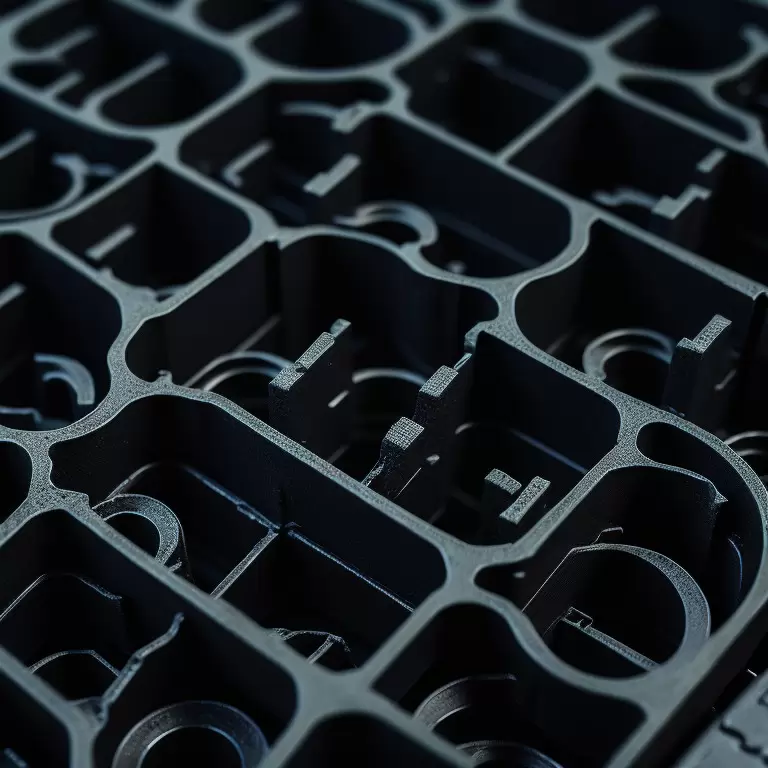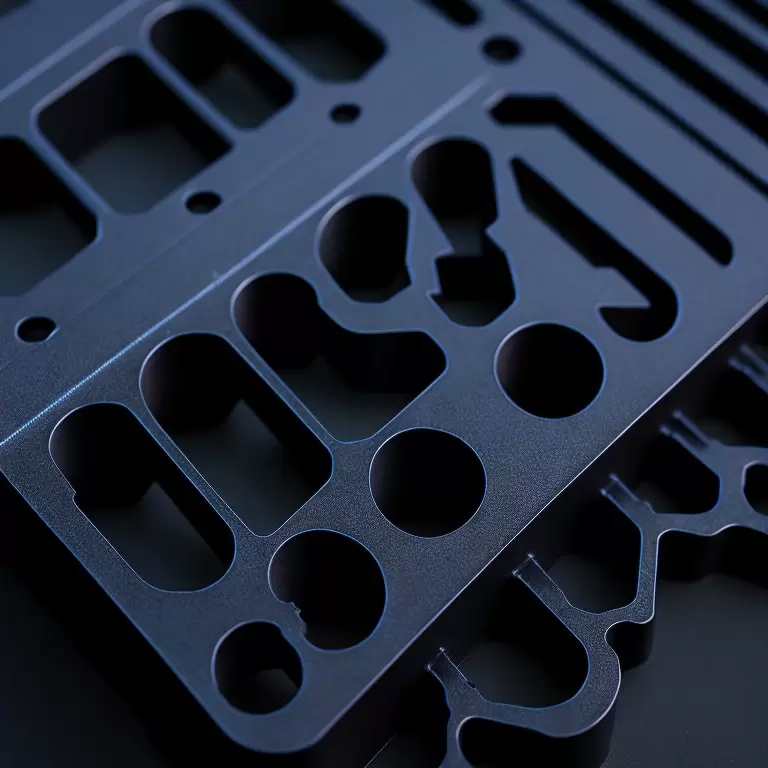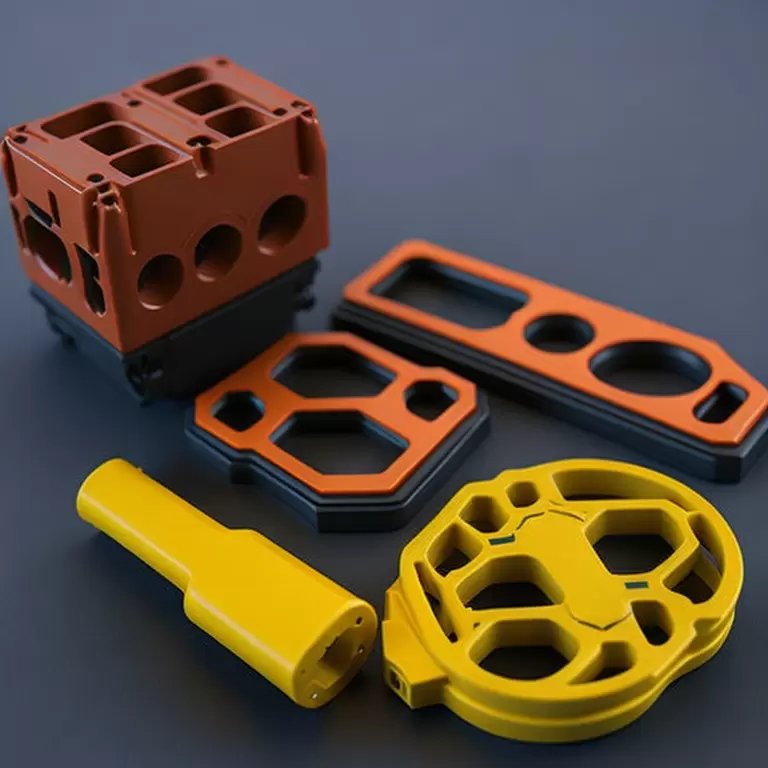Table of Contents:
- Introduction
- Materials Used in Plastic Injection Molding Parts
- Plastic Injection Molding Processes
- Design Considerations for Plastic Injection Molding Parts
- Quality Control in Plastic Injection Molding Parts
- Applications of Plastic Injection Molding Parts
- Environmental Impact and Sustainability
- Conclusion
-
1.Introduction
Plastic Injection Molding Parts have revolutionized the manufacturing industry, providing a cost-effective and efficient way to mass-produce parts and products. This article provides a comprehensive overview of Plastic Injection Molding Parts, including their materials, processes, and applications.
Definition of Plastic Injection Molding Parts:
Plastic Injection Molding Parts refer to parts and products that are produced through the injection molding process, in which molten plastic is injected into a mold and allowed to cool and solidify into the desired shape. Injection molding is a versatile and efficient manufacturing process that is widely used in various industries.
Brief History of Plastic Injection Molding Parts:
The history of Plastic Injection Molding Parts dates back to the late 1800s, when the first injection molding machine was developed. The process was initially used to produce billiard balls, but it soon became popular for producing a wide range of products. Today, injection molding is used to produce everything from automotive parts to consumer products.
Advantages of Using Plastic Injection Molding Parts:
One of the primary advantages of using Plastic Injection Molding Parts is their cost-effectiveness. Injection molding allows for the mass production of parts at a low cost per unit, making it an ideal process for producing high-volume products. Additionally, injection molding provides a high level of precision and accuracy, resulting in consistent and uniform parts.
-
2.Materials Used in Plastic Injection Molding Parts
Plastic Injection Molding Parts can be produced using a wide range of plastic materials. The choice of material depends on several factors, including the intended application, the part design, and the desired properties of the finished product.
Types of Plastic Materials:
There are two main types of plastic materials used in injection molding: thermoplastics and thermosets. Thermoplastics are plastics that can be melted and re-melted multiple times without undergoing significant chemical changes. Examples of thermoplastics include polyethylene, polypropylene, and polycarbonate. Thermosets, on the other hand, are plastics that undergo a chemical change during the molding process, resulting in a permanent and irreversible set. Examples of thermosets include epoxy and phenolic resins.
Material Selection Factors:
The choice of material for Plastic Injection Molding Parts depends on several factors, including the desired properties of the finished product, the part design, and the intended application. Some of the key factors to consider when selecting a material include:
- Strength and durability
- Flexibility and stiffness
- Heat resistance
- Chemical resistance
- Appearance and color
- Cost
.
Common Plastic Materials Used in Injection Molding:
Some of the most commonly used plastic materials in injection molding include:
- Polyethylene (PE)
- Polypropylene (PP)
- Acrylonitrile Butadiene Styrene (ABS)
- Polycarbonate (PC)
- Polyamide (PA)
- Polyoxymethylene (POM)
- Polystyrene (PS)
-
3.Plastic Injection Molding Processes
The injection molding process consists of several steps, including:
- Material Preparation: The plastic material is heated and melted to a specific temperature and consistency.
- Injection: The molten plastic is injected into the mold under high pressure.
- Cooling: The mold is cooled to allow the plastic to solidify and take on the desired shape.
- Ejection: The finished part is ejected from the mold.
.
Types of Injection Molding Processes:
There are several types of injection molding processes, including:
- Conventional Injection Molding: This is the most common type of injection molding process, in which the plastic material is injected into a mold and allowed to cool and solidify.
- Gas-Assisted Injection Molding: This process involves injecting gas into the mold to create hollow sections or to reduce the weight of the finished product.
- Multi-Shot Injection Molding: This process involves injecting two or more different materials into the mold to produce a finished product with multiple colors or materials.
- Insert Molding: This process involves inserting metal or plastic parts into the mold before injection to create a finished product with integrated components.
.
Injection Molding Machine Components:
The injection molding machine consists of several components, including:
- Hopper: The hopper holds the plastic material and feeds it into the injection unit.
- Injection Unit: The injection unit melts and injects the plastic material into the mold.
- Mold: The mold is the cavity in which the plastic material is injected and shaped.
- Clamping Unit: The clamping unit holds the mold closed during the injection and cooling process.
- Ejection System: The ejection system ejects the finished part from the mold.
-
4.Design Considerations for Plastic Injection Molding Parts
Design Guidelines for Injection Molding:
Designing parts for injection molding requires careful consideration of several factors, including:
- Part Design: The part design should be optimized for the injection molding process, with features that allow for easy molding and ejection.
- Wall Thickness: The wall thickness of the part should be consistent and appropriate for the chosen material and application.
- Draft Angles: Draft angles should be incorporated into the part design to allow for easy ejection from the mold.
- Gates and Runners: The placement and design of gates and runners should be optimized for the material and part design.
.
Common Design Issues and Solutions:
Some common design issues that can arise in Plastic Injection Molding Parts include:
- Warpage and Shrinkage: Warpage and shrinkage can occur due to uneven cooling or improper part design. These issues can be addressed through proper mold design and cooling strategies.
- Sink Marks: Sink marks can occur due to uneven cooling or excessive material thickness. These issues can be addressed through proper part design and material selection.
- Flash: Flash occurs when excess material seeps out of the mold during injection. This issue can be addressed through proper mold design and injection parameters.
Prototyping and Testing:
Prototyping and testing are critical steps in the injection molding process, allowing designers and manufacturers to identify and address design issues before mass production. Various prototyping techniques, such as 3D printing, can be used to create test parts and evaluate the design and functionality of the finished product.

-
5.Quality Control in Plastic Injection Molding Parts
Quality Control Methods and Standards:
Quality control is an essential aspect of the injection molding process, ensuring that finished parts meet the desired specifications and standards. Quality control methods can include visual inspection, dimensional analysis, and material testing, among others. Various industry standards, such as ISO 9001, provide guidelines for quality management in manufacturing processes.
Inspection Techniques:
Inspection techniques can vary depending on the type of part and material being produced. Some common inspection techniques include:
- Visual Inspection: This involves examining the finished part for surface defects, such as cracks or bubbles.
- Dimensional Analysis: This involves measuring the part to ensure that it meets the desired dimensions and tolerances.
- Material Testing: This involves testing the material for properties such as strength, flexibility, and durability.
.
Defects and Troubleshooting:
Despite proper design and quality control measures, defects can still occur in Plastic Injection Molding Parts. Common defects include:
- Sink Marks
- Warpage
- Flash
- Short Shots
- Burn Marks
Various troubleshooting strategies, such as adjusting the injection parameters or changing the mold design, can be used to address these defects.
-
6.Applications of Plastic Injection Molding Parts
Plastic Injection Molding Parts have a wide range of applications across various industries, including:
- Industrial Applications: Injection molding is commonly used in industrial applications to produce parts for machinery, tools, and equipment. These parts can include gears, bearings, and housings.
- Automotive Industry: Injection molding is used extensively in the automotive industry to produce parts such as interior trims, dashboards, and door panels.
- Medical Industry: Injection molding is used to produce various medical parts and devices, such as syringes, medical connectors, and inhalers.
- Consumer Goods: Injection molding is used to produce a wide range of consumer goods, including toys, packaging, and household appliances.
- Electronics Industry: Injection molding is used to produce parts for electronics such as computer keyboards, phone cases, and chargers.
-
7.Future of Plastic Injection Molding Parts
Advancements in Materials and Technologies:
The future of Plastic Injection Molding Parts is likely to see continued advancements in materials and technologies, leading to improved properties and capabilities. Some notable advancements include:
- Biodegradable and Recyclable Materials: With increasing environmental concerns, there is growing interest in biodegradable and recyclable materials for injection molding applications.
- Additive Manufacturing: Additive manufacturing techniques, such as 3D printing, are being increasingly used for rapid prototyping and small-scale production of injection molded parts.
- Industry 4.0: The use of Industry 4.0 technologies, such as artificial intelligence and automation, is likely to increase efficiency and accuracy in the injection molding process.
.
Challenges and Opportunities:
While advancements in materials and technologies present opportunities for the Plastic Injection Molding industry, there are also several challenges that need to be addressed. These challenges include:
- Environmental Concerns: The use of non-biodegradable materials in injection molding has raised concerns about plastic waste and pollution. Efforts to address these concerns through the use of biodegradable and recyclable materials are ongoing.
- Cost and Efficiency: Injection molding can be costly and time-consuming, particularly for smaller production runs. Advances in additive manufacturing and Industry 4.0 technologies offer potential solutions to these challenges.
- Quality Control: Ensuring consistent quality in injection molded parts can be challenging, particularly for larger production runs. Advances in quality control methods and technologies are needed to address this challenge.
If you need about Plastic Injection Molding Parts service,You can click on the V1 Prototype website to find it:16 Years Foucus On Plastic Injection Mold Manufacturing, Molding Products Mainly In Automotive, Electronics, Appliance, Medical, Housewares Industries.

-
8.Conclusion:
Plastic Injection Molding Parts are an essential component of various industries and applications, providing a cost-effective and efficient way to produce high-quality parts and components. While the industry faces various challenges, advancements in materials, technologies, and quality control offer significant opportunities for future growth and development. As the demand for high-quality and sustainable products continues to grow, the importance of Plastic Injection Molding Parts is likely to continue to increase.




